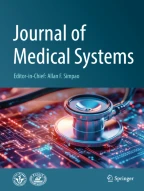Abstract
Bile duct identification and extraction in magnetic resonance cholangiopancreatography (MRCP) images, is a necessary step in the development of computer-aided diagnosis systems using such images. MRCP is becoming the de facto modality in the diagnosis of biliary diseases and even in the pre-surgical workup for liver transplants. The energy minimization graph-cut method is a proven technique in the extraction of objects in natural images, and even used in 3D reconstruction. This paper proposes several versions of the graph-cut approach for the extraction of the biliary structures in MRCP images. The schemes include a fully interactive lazy snapping method, a manual point selection method for minimal user interaction and an automated phase unwrapping via max flows (PUMA) implementation. The performance of the algorithms vary, but the results support that the scheme is a promising semi-automated object extraction scheme for the significant biliary structures in medical MRCP images.
Similar content being viewed by others
References
Shi, J., Fowlkes, C., Martin, D., Sharon, E., Graph based image segmentation tutorial. CVPR http://www.cis.upenn.edu/∼jshi/GraphTutorial/ 2004.
Massoptier, L., and Casciaro, S., Automatic liver segmentation through graph-cut technique. IEEE Eng. Med. Biol. Soc. 1:5243–5246, 2007.
Esneault, S., Hraiech, N., Delabrousse, E., and Dillenseger, J.-L., Liver segmentation for interstitial ultrasound therapy. IEEE Eng. Med. Biol. Soc. 1:5247–5250, 2007.
Funka-Lea, G., Boykov, Y., Florin, C., Jolly, M-P., Moreau-Gobard, R., Ramaraj, R., Rinck, D., Automatic heart isolation for CT coronary visualization using graph-cuts. Intl. Symp. on Biomed. Imag.:614–617, 2006.
Liu, L., Raber, D., Nopachai, D., Commean, P., Sinacore, D., Prior, F., Pless, R., and Ju, T., Interactive separation of segmented bones in CT volumes using graph cut. MICCAI(1) LNCS 5241:296–304, 2008.
Fleischhacker, H., Graph-cuts theories and applications. Mat-VisSS http://www.icg.tugraz.at/courses/lv710.108/2007/Student-Talks/graphcuts.pdf 2007.
Park, A., Hong, K., and Jung, K., Better foreground segmentation for 3D face reconstruction using graph cuts. PSIVT LNCS 4872:715–726, 2007.
Power, W., Schoonees, J., Understanding background mixture models for foreground segmentation. Image & Vision Comput.:267–271, 2002.
Howe, N. R., Deschamps, A., Better foreground segmentation through graph cuts. Technical Report http://arxiv.org/abs/cs.CV/0401017 2004.
Kumar, M. P., Torr, P. H. S., and Zisserman, A., Obj. Cut. Comp. Vision & Pat. Recogn. 1:18–25, 2005.
Ford, L., Fulkerson, D., Flows in networks. Princeton Uni Press, 1962.
Boykov, Y. Y., and Jolly, M. P., Interactive graph cuts for optimal boundary & regional segmentation of objects in N-D images. Intl. Conf. Comp. Vis. 1:105–112, 2001.
Li, Y., Sun, J., Tang, C.-K., and Shum, H.-Y., Lazy snapping. ACM Trans. Graph 23(3):303–308, 2004.
Vincent, L., and Soille, P., Watersheds in digital spaces: an efficient algorithm based on immersion simulations. IEEE PAMI 13(6):583–598, 1991.
Sun, Y., Li, B., Yuan, B., Miao, Z., and Wan, C., Better foreground segmentation for static cameras via new energy form and dynamic graph-cut. Intl. Conf. Pat. Recogn. 2:49–52, 2006.
Bioucas-Dias, J., and Valadão, G., Phase unwrapping via graph cuts. IEEE Trans. Image Process 16(3):698–709, 2007.
Hedley, M., and Rosenfeld, D., A new two-dimensional phase unwrapping algorithm for MRI images. Magn. Resonance Med. 24:177–181, 1992.
Logeswaran, R., Haw, T. W., and Sarker, M. S. Z., Liver isolation in abdominal MRI. J. Med. Sys. 32(4):259–268, 2008.
Logeswaran, R., Neural networks aided stone detection in thick slab MRCP images. Med. & Biol. Eng. & Comput. 44(8):711–719, 2006.
Logeswaran, R., A computer-aided multi-disease diagnostic system using MRCP. J. Dig. Imag. 21(2):235–242, 2007.
Sinop, A. K., Grady, L., A seeded image segmentation framework unifying graph cuts and random walker which yields a new algorithm. IEEE ICCV:1–8, 2007.
Grady, L., Random walks for image segmentation. IEEE PAMI 28(11):1768–1783, 2006.
Acknowledgement
This work was supported by the Ministry of Science, Technology and Innovation (MOSTI), Malaysia, and the Academy of Sciences, Malaysia (ASM) through the Brain Gain Malaysia program.
Author information
Authors and Affiliations
Corresponding author
Rights and permissions
About this article
Cite this article
Logeswaran, R., Kim, D., Kim, J. et al. Graph-Cut Energy Minimization for Object Extraction in MRCP Medical Images. J Med Syst 36, 311–320 (2012). https://doi.org/10.1007/s10916-010-9477-0
Received:
Accepted:
Published:
Issue Date:
DOI: https://doi.org/10.1007/s10916-010-9477-0
